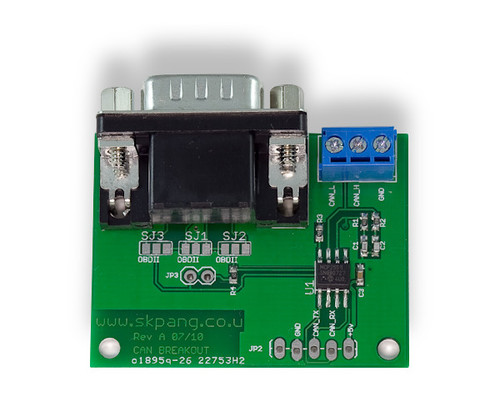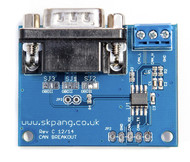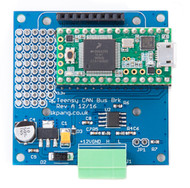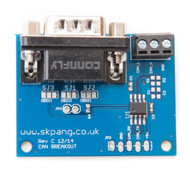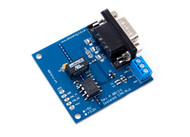Product Description
Free Shipping Within the United States!
This CAN Bus breakout board is the perfect solution to adding a full Controller Area Network (CAN) Bus interface to embedded systems such as the Arduino Due or mbed LPC1768. The board uses Microchip's MCP2551 High-Speed CAN Transceiver IC. The output pins are on both the screw terminal and DB9 connector. The DB9 can be configured for use with an OBD-II cable or standard CAN pin-out via solder bridges.
While many popular embedded systems (e.g., mbed LPC1768, Arduino Due, Teensy 3.x, and more) provide their respective CAN Bus interfaces, these CAN Bus capabilities are per default useless without their respective CAN Bus transceivers. A CAN Bus transceiver is a line driver that converts the controller’s TTL signal to the actual CAN level, which is a differential voltage. The use of differential voltage contributes to the vast reliability of the CAN Bus. Out of cost constraints, boards like the Arduino Due and the mbed LPC1768 have no onboard CAN Bus transceivers. CAN Bus transceivers would add more costs to the board and why pay for it when you don't need it? CAN Bus transceivers, due to power management requirements, always come as a separate chip.
Features
- MCP2551 CAN Transceiver
- 5 VDC supply
- Supports 1 Mbit/s operation
- Implements ISO-11898 standard physical layer requirements
- Up to 112 nodes can be connected
- DB9 and screw terminal connection
- DB9 can be configure for OBD-II cable or standard CAN pin-out
- 120 Ohm terminating resistor via jumper
Documents
- MCP2551 datasheet...
- App Note: mbed LPC1768 Development Kit With CAN Bus Breakout Board...
- App Note: Arduino Due With CAN Bus Breakout Board...
- A Brief Introduction to Controller Area Network...
The board requires a pin header which is not included.
Solder Bridge Configuration
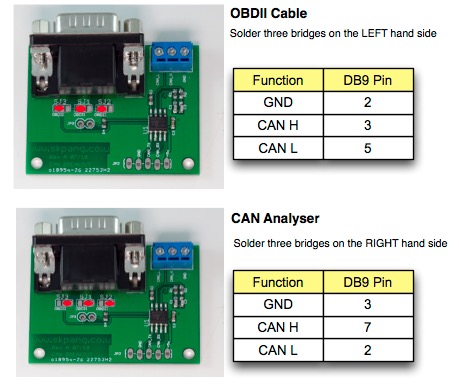
Connecting to an mbed LPC 1768
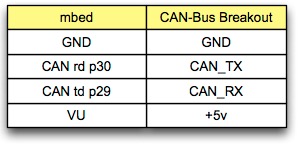
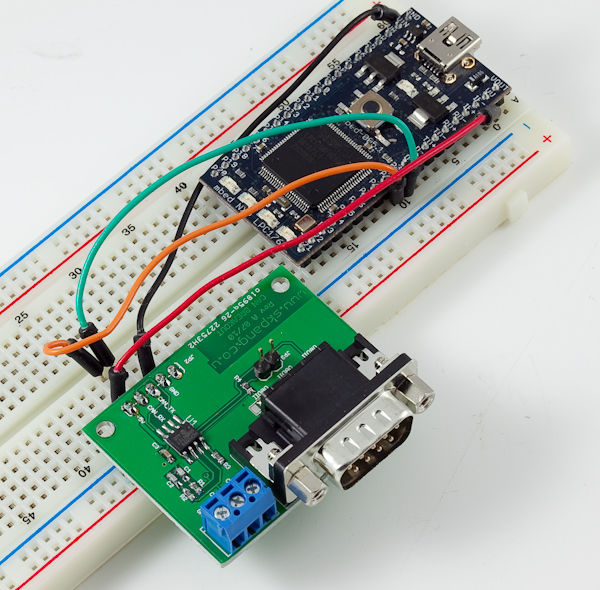
 Fast and Effective Embedded Systems Design - Applying the ARM mbed
Fast and Effective Embedded Systems Design - Applying the ARM mbed
This book is a fast-moving introduction to embedded system design, applying the innovative ARM mbed and its web-based development environment. Each chapter introduces a major topic in embedded systems and proceeds as a series of practical experiments, adopting a "learning through doing" strategy. Minimal background knowledge is needed. C/C++ programming is applied, with a step-by-step approach that allows the novice to get coding quickly. Once the basics are covered, the book progresses to some "hot" embedded issues - intelligent instrumentation, networked systems, closed-loop control, and digital signal processing.
Written by two experts in the field, this book reflects on the experimental results, develops and matches theory to practice, evaluates the technology or technique's strengths and weaknesses, and considers applications and the broader context. Numerous exercises and end-of-chapter questions are included.
- A hands-on introduction to the field of embedded systems, with a focus on fast prototyping
- Key embedded system concepts covered through simple and effective experimentation
- Amazing breadth of coverage, from simple digital i/o, to advanced networking and control
- Applies the most accessible tools available in the embedded world
- Supported by mbed and book web sites, containing FAQs and all code examples
- Deep insights into ARM technology, and aspects of microcontroller architecture
- Instructor support available, including power point slides, and solutions to questions and exercises
More Information: Fast and Effective Embedded Systems Design: Applying the ARM mbed
 Loading... Please wait...
Loading... Please wait...

